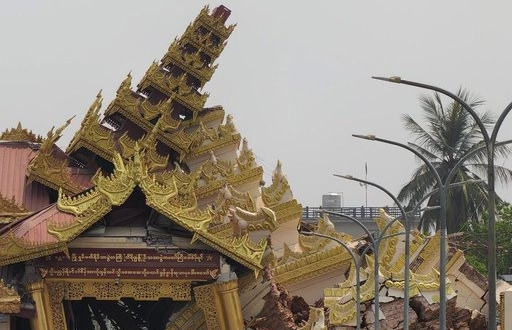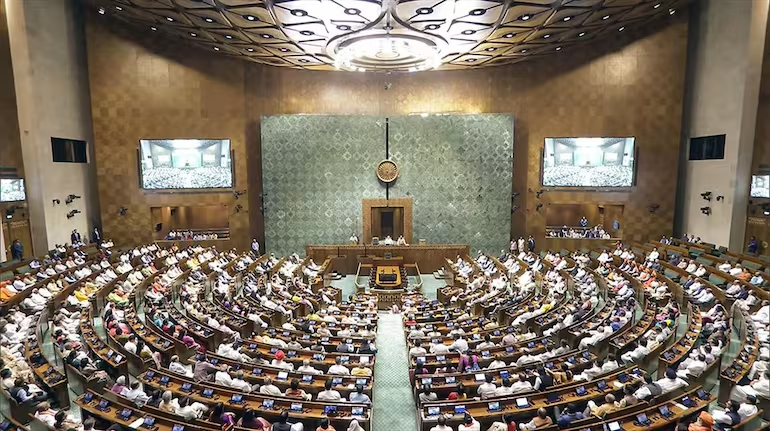A devastating 7.7-magnitude earthquake struck central Myanmar on March 28, 2025, with its epicenter near Mandalay, triggering widespread destruction and loss of life across the region. As of Saturday, March 29, the death toll has surged past 1,000, with Myanmar’s military junta reporting 1,002 fatalities and 2,376 injuries. The quake, occurring at a shallow depth of 10 kilometers, has left border regions, particularly those near Thailand and China, in dire need of relief as rescue operations intensify.
Scale of Destruction
The earthquake, one of the most powerful to hit Myanmar in recent history, flattened buildings, buckled roads, and caused significant infrastructure damage. In Mandalay, the country’s second-largest city, iconic structures like the Maha Myat Muni Pagoda and a major monastery near Taunggyi in Shan State collapsed. The 90-year-old Ava Bridge over the Irrawaddy River, a critical transport link, also crumbled …
In the Sagaing region, southwest of Mandalay, highways connecting Mandalay to Yangon sustained heavy damage, severely hampering relief efforts. A 4.3-magnitude aftershock struck late Friday, further complicating rescue operations. The U.S. Geological Survey warns that the death toll could exceed 10,000, with economic losses potentially surpassing Myanmar’s GDP due to the scale of destruction.
Relief Efforts Ramp Up
International aid began pouring into Myanmar on Saturday as the global community responded to the crisis. India launched “Operation Brahma,” dispatching an Indian Air Force C-130J aircraft carrying 15 tonnes of relief supplies—tents, blankets, sleeping bags, food packets, hygiene kits, generators, and medicines—to Yangon. External Affairs Minister S. Jaishankar announced that additional aid, including search and rescue teams and medical personnel, accompanied the flight, with more support to follow.
China, sharing a border with Myanmar, mobilized a 37-member rescue team from Yunnan Province, equipped with life detectors, drones, and early warning systems, departing from Kunming Changshui International Airport at 6 a.m. on March 29. The Chinese embassy pledged 100 million yuan ($13.77 million) in aid. Meanwhile, the United Nations allocated $5 million for initial relief efforts, with UN Secretary-General Antonio Guterres emphasizing the urgency of the situation. New Zealand, via Foreign Minister Winston Peters, committed support through the International Red Cross.
In Myanmar’s border regions, particularly Shan State and areas near Thailand, relief efforts face significant challenges. Damaged infrastructure, ongoing civil conflict, and widespread power and internet outages have left many areas isolated. Myanmar’s military government, led by Min Aung Hlaing, declared a state of emergency in affected zones, including Naypyitaw and Mandalay, and set up a makeshift hospital and relief camp at Mandalay Airport, though operations remain suspended.
Regional Impact
The quake’s effects rippled beyond Myanmar, with tremors felt in Thailand, China, and India. In Thailand, at least 10 people died, primarily due to a collapsed 33-storey building under construction near Bangkok’s Chatuchak market, where up to 100 workers remain trapped. Rescue teams in Bangkok are racing against time, though Thailand’s lack of expertise in handling such disasters has slowed progress. In India’s northeastern states—Assam, Nagaland, and Meghalaya—minor tremors prompted a national advisory to stay vigilant, though no major damage was reported.
Humanitarian Crisis Deepens
Myanmar, already grappling with civil war and displacement, faces a compounded humanitarian crisis. The UN estimates 3 million people are displaced within the country, with 18.6 million needing aid even before the quake. The earthquake has displaced thousands more, with dwindling resources exacerbated by recent U.S. aid cuts. The junta has called for urgent blood donations in the hardest-hit areas.
Expert Insights
The National Centre for Seismology attributes the severe damage to soil liquefaction, matched vibration frequencies, and the active Sagaing Fault. Experts warn that aftershocks could persist, posing further risks to survivors and rescuers alike. Mohammed Riyas, International Red Cross Director for Myanmar, cautioned that the full extent of the disaster may not be clear for weeks.
Global Response
The Southeast Asian bloc ASEAN recognized the urgent need for assistance, pledging support for recovery efforts. Survivors in border regions recounted harrowing experiences, with buildings collapsing “in the blink of an eye.” As the death toll climbs—earlier reports cited 694 deaths and 1,670 injuries before the latest update—the race to find survivors continues amid fading hopes and mounting despair.
 Indian Thought Latest News & Views
Indian Thought Latest News & Views



